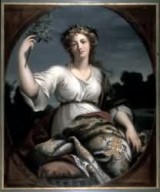What is Art History?

Art History is the study of human expression – visual, but also tactile, spatial and sometimes aural – through history. Art Historians develop ways to translate from the visual to the verbal, through analysis and interpretation, using a number of different approaches and methodologies. Art Historians develop a special sensitivity and understanding of the way visual, material, and – in contemporary art sometimes immaterial – expression makes meaning in the world, and how those meanings contribute to our social, political, and spiritual life. Architectural historians look at buildings and their environment, the role the designed environment plays in society, and the relationship between people and spaces.
Why Art History, or how will I ever get a job with an Art History degree?
Art History leads to a number of professions in the field such as education, museum and art gallery work, work in cultural heritage or the art market, while architectural historians can find opportunities in heritage, preservation and policy. Professional jobs in art history generally require a graduate degree in the field, either a Master of Arts or a PhD. Students of architectural history and theory may enter architectural programs at the graduate level.
An Art History BA, moreover, prepares students with invaluable skills for any number of professions, including: oral and written articulation, the ability to identify, critically assess, and analyse research materials, the ability to creatively problem-solve, the love of learning, critical thinking, technological skills related to visual and verbal communication, the ability to work independently and in groups.
In our current economy, employers are increasingly looking for people who are not solely trained with vocational skills likely to become obsolete or inapplicable once the employee enters the workplace, but for people who know how to learn, research, and problem solve. In the rise of what has been called the new Creative Class, arts training and creativity is a great asset.
In a society in which knowledge is communicated in increasingly visual terms, art history graduates are uniquely able to appreciate and analyse human expression in ways that go beyond the verbal. Their exposure to a wide range of historical and global cultures is of value in a world in which tolerance and appreciation of numerous cultures is essential. Experience with different forms of expression and different cultures makes art history graduates more likely to think “out of the box.” Furthermore, art history provides students with a sense of greater values in life, which leads to deeper appreciation of human culture, and arguably, deeper satisfaction and quality of life.
Why Art History at Carleton?
- We have an engaged faculty, representing a wide range of fields, including photography, Canadian, aboriginal art, Renaissance and Medieval art, Asian art, print culture, architecture, and modern art.
- Our program in the History and Theory of Architecture is unique in Canada
- We score consistently high on our teaching evaluations.
- We make extensive use of the rich cultural resources in Ottawa: National, regional and local art and heritage institutions.
- We have a long-standing and effective practicum program placing students in work situations in nearly all the relevant institutions in Ottawa, from the National Gallery to local artist-run centres.
- We have a number of top-ranking professionals in the field who participate in teaching classes, lectures and workshops.
- We have an active on-site Art Gallery with over 27,000 objects.
- We are known as a student-friendly department.
- We actively provide opportunities for on-site learning in Ottawa and abroad.